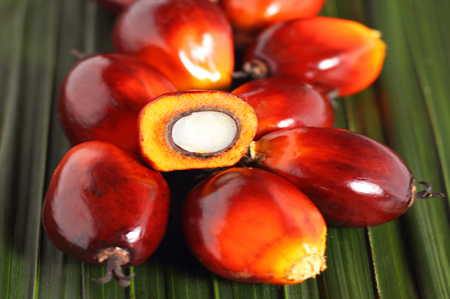 (Reuters) – Malaysian palm oil futures on Friday slid to their lowest in over seven months, following soy oil prices down and recording their biggest monthly loss in nearly two years.
(Reuters) – Malaysian palm oil futures on Friday slid to their lowest in over seven months, following soy oil prices down and recording their biggest monthly loss in nearly two years.
Palm has dropped nearly 8 percent in May in its largest monthly decline since September 2012, hurt by a stronger ringgit and an expected rise in supply.
“The market is … really going south,” said a trader with a foreign commodities brokerage in Malaysia. “It’s being dragged down by the lackluster performance in the U.S. and Dalian soyoil markets. Plus the ringgit has strengthened.”
The benchmark August contract on the Bursa Malaysia Derivatives Exchange had inched down 1.6 percent to 2,421 ringgit ($753) per tonne by Friday’s close.
Prices in late trade dropped to 2,420 ringgit, their weakest since Oct. 22. Weekly prices fell 3.8 percent, their biggest fall since early January.
Total traded volume stood at 35,465 lots of 25 tonnes, just above the usual 35,000 lots.
“There’s been no major bearish news but we believe (the decline) is more due to falling soybean oil, fears of rising palm stocks and bearish chart play,” said another Kuala Lumpur-based dealer.
“Going further, our next target of 2,350-2,380 ringgit is still on our radar, but we need to watch price behavior over the next few sessions.”
Chart analysis showed that palm oil is expected to drop to 2,422 ringgit per tonne, as it has cleared a support at 2,472 ringgit, said Reuters market analyst Wang Tao.
A strong ringgit squeezes margins and makes palm a less attractive feedstock option for overseas investors and refiners.
The ringgit gained 1.5 percent in May on the back of solid first-quarter economic growth in Malaysia, and after the central bank signalled a rate hike.
Worries of bigger global soybean supplies also weighed on investor sentiment. Brazil expects its next soybean crop to yield a record 94 million tonnes under normal climate conditions.
Larger supplies of soybeans for crushing would lower prices of soyoil and potentially shift food and fuel demand away from palm.
The U.S. soyoil contract for July fell 0.7 percent in late Asian trade, while the most active September soybean oil contract on the Dalian Commodities Exchange lost 0.6 percent.
But some market participants expect palm prices, which have lost about 9 percent this year, to take a breather next month as a Muslim festival slows output, while driving up domestic consumption in top producer Indonesia.
“Next month is very important. We are moving into the fasting month and production generally comes down a bit,” the first trader said.
“At the same time Indonesian exports will slow down as they hold back palm oil for local consumption. This might help lift the market from the doldrums.”
In other markets, Brent crude oil steadied around $110 a barrel on Friday, near the top of its range over the last three months, underpinned by supply worries and evidence of strong oil
demand in the United States, the world’s top oil consumer.




